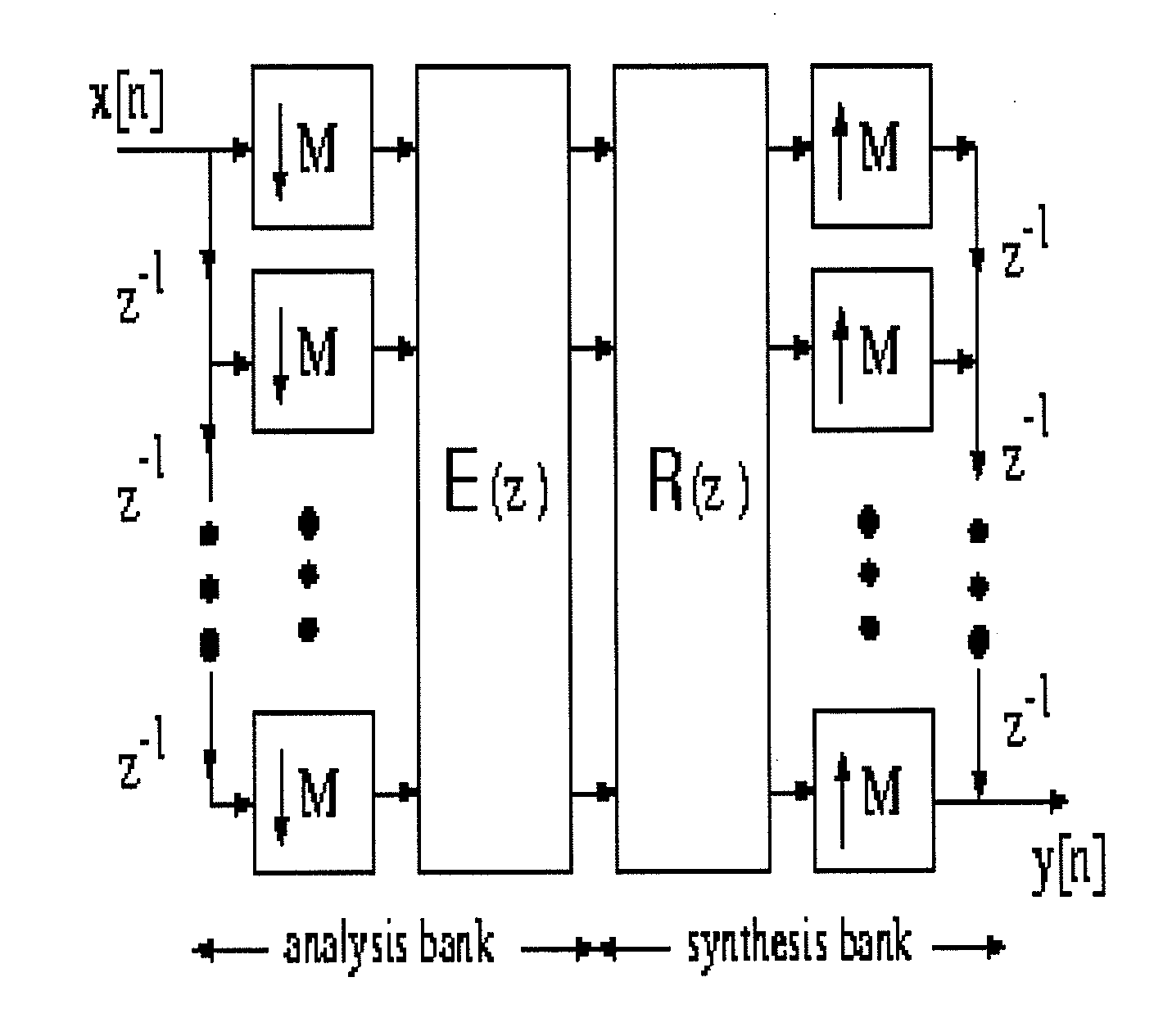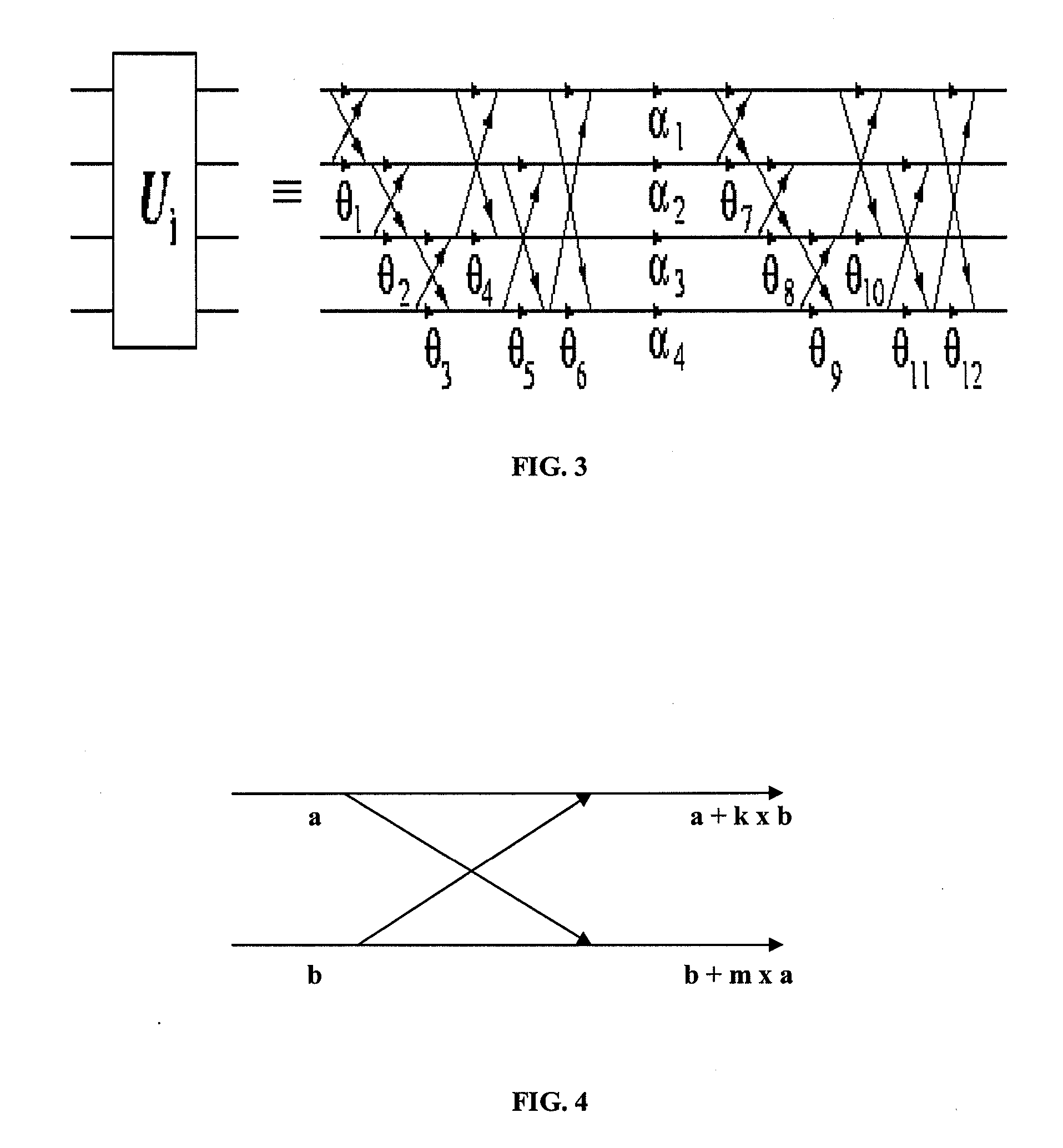Fast lapped image transforms using lifting steps
a technology of lifting steps and lapped images, applied in the field of image processing, can solve the problems of consistently outperforming state-the-art wavelet-based coding systems in coding performance, and achieve the effects of high quality, fast, efficient and robust coding systems, and low cos
- Summary
- Abstract
- Description
- Claims
- Application Information
AI Technical Summary
Benefits of technology
Problems solved by technology
Method used
Image
Examples
Embodiment Construction
[0027] Typically, a block transform for image processing is applied to a block (or window) of, for example, 8×8 group of pixels and the process is iterated over the entire image. A biorthogonal transform in a block coder uses as a decomposition basis a complete set of basis vectors, similar to an orthogonal basis. However, the basis vectors are more general in that they may not be orthogonal to all other basis vectors; the restriction is that there is a “dual” basis to the original biorthogonal basis such that every vector in the original basis has a “dual” vector in the dual basis to which it is orthogonal. The basic idea of combining the concepts of biorthogonality and lapped transforms has already appeared in the prior art. The most general lattice for M-channel linear phase lapped biorthogonal transforms is presented in T. D. Tran, R. de Queiroz, and T. Q. Nguyen, “The generalized lapped biorthogonal transform,” ICASSP, pp. 1441-1444, Seattle, May 1998, and in T. D. Tran, R. L. ...
PUM
 Login to View More
Login to View More Abstract
Description
Claims
Application Information
 Login to View More
Login to View More - R&D
- Intellectual Property
- Life Sciences
- Materials
- Tech Scout
- Unparalleled Data Quality
- Higher Quality Content
- 60% Fewer Hallucinations
Browse by: Latest US Patents, China's latest patents, Technical Efficacy Thesaurus, Application Domain, Technology Topic, Popular Technical Reports.
© 2025 PatSnap. All rights reserved.Legal|Privacy policy|Modern Slavery Act Transparency Statement|Sitemap|About US| Contact US: help@patsnap.com



